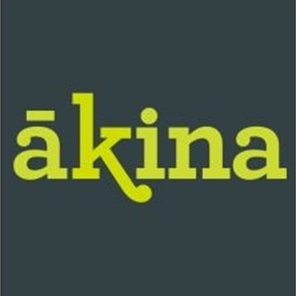Trials And Tribulations: Trump’s Tit-for-tat Tariff Tussle Troubles Trade… We Focus On Employment At Home
- The tariff tit-for-tat has begun. Trump has slapped a 25% tariff on Mexican and Canadian imports, and a 10% tariff on Chinese imports. Canada has already retaliated with 25% on a broad range of US goods, Mexico is strategizing its response, and China is complaining to the WTO over legality.
- The Kiwi labour market is still playing catch up. Labour demand is weak, with more than 30,000 jobs lost in 2024. By our calculations, the unemployment rate rose to a four-year high of 5.1%. We’ll find out more this Wednesday.
- Our COTW highlights the key takeaways from Paul Conway’s speech on New Zealand’s long-run growth and interest rate outlook. While an economic recovery is expected, there are some sobering truths about our declining productivity and labour-intensive strategy for growth that need some serious addressing.
Here’s our take on current events
And so it begins. The tit-for-tat trade tariff tussle is in focus. Over the weekend, President Trump signed an order authorising tariffs on its three largest trading partners – Canada, Mexico, and China – and at scales more sweeping than during his first presidency. Beginning from Tuesday, Mexican and Canadian imports will face tariffs of up to 25%, while a 10% tariff has been imposed on Chinese imports. Canadian energy has also been slapped with a 10% tariff. This one is especially problematic. US oil refineries have become increasingly dependent on Canadian crude oil over the years. Canada now makes up 60% of total US oil imports, up from 33% a decade ago. Canada has already retaliated with a 25% tariff on over US$100bn of US goods. Meanwhile, Mexico is strategizing on its countermeasure. And China is complaining to the World Trade Organisation over legality. No doubt this trade dispute will remain in focus in weeks to come.
Here at home, the RBNZ’s Chief Economist, Paul Conway, took the stage last week to share some insights on Kiwi growth and long-run interest rates. And of course, with the Reserve Bank’s February MPS just weeks away, many, including us, were tuned in for any hints on the RBNZ’s latest outlook. Conway did offer some reassuring words, noting "the Monetary Policy Committee (MPC) is confident that persistent domestic inflation pressures will ease, given the spare capacity in the economy over 2025.” And we agree.
Beyond that, Conway's speech focused on the challenges facing New Zealand's outlook, with particular emphasis on our ongoing productivity problem. We felt that deserved a section of its own, so check out our COTW for more.
This week, our focus turns to the Kiwi labour market, data out Wednesday. And we expect a continued loosening in conditions. By our calculations, the unemployment rate likely lifted to 5.1% from 4.8% - the highest rate in four years.
The labour market lags the broader economic cycle. But it’s catching up now. Down went the economy in 2024, up goes the unemployment rate. Following a period of strong employment growth in 2022/23, hiring has slowed. Over 30,000 (net) jobs were lost in 2024. We expect a second straight quarterly decline in employment last quarter.
Labour force participation continues to normalise from record-highs. The participation rate soared to an all-time high of 72.4%. Because a surge in migration supplied much needed work-ready migrants, and a cost-of-living crisis forced many back to work. But workers are now leaving the workforce as demand weakens. Like in the September quarter, a bigger-than-expected slide in the participation rate led to a more muted rise in the unemployment rate. Conversely, should the participation rate remain unchanged, a higher unemployment rate would result.
Everything washes out in wage growth. And wage growth is cooling as demand weakens and inflation expectations have fallen back to at 2%. We expect to see a 0.6% quarterly rise in wages, pulling down the annual rate from 3.3% to 2.9%.
The jobs data is a key statistic before the RBNZ’s February MPS on 19th. Our forecasts are largely in line with the RBNZ’s latest projections. With the 2% target inflation rate virtually reached and core inflation trending lower, we believe the RBNZ needs to return policy to a more neutral setting. We continue to expect a 50bp cut on 19th February. And a 25bp cut in April/May. The debate now centres on how far the RBNZ cut the cash rate below 3.5%. The RBNZ track signals a long pause. We think another 50bps, with risk of more.ious addressing.





 Science Media Centre: Government Plans To Double Mineral Exports By 2035 – Expert Reaction
Science Media Centre: Government Plans To Double Mineral Exports By 2035 – Expert Reaction University of Canterbury: AI-powered Tool To Combat Rising Wildfire Danger
University of Canterbury: AI-powered Tool To Combat Rising Wildfire Danger NZ Certified Builders: BCITO And NZCB Announce Apprentice Challenge 2025
NZ Certified Builders: BCITO And NZCB Announce Apprentice Challenge 2025 NIWA: Seasonal Climate Outlook February To April 2025
NIWA: Seasonal Climate Outlook February To April 2025 Bill Bennett: Are New Zealand's Submarine Links Safe?
Bill Bennett: Are New Zealand's Submarine Links Safe? Bill Bennett: DeepSeek Shock Could Spur AI Space Race
Bill Bennett: DeepSeek Shock Could Spur AI Space Race



